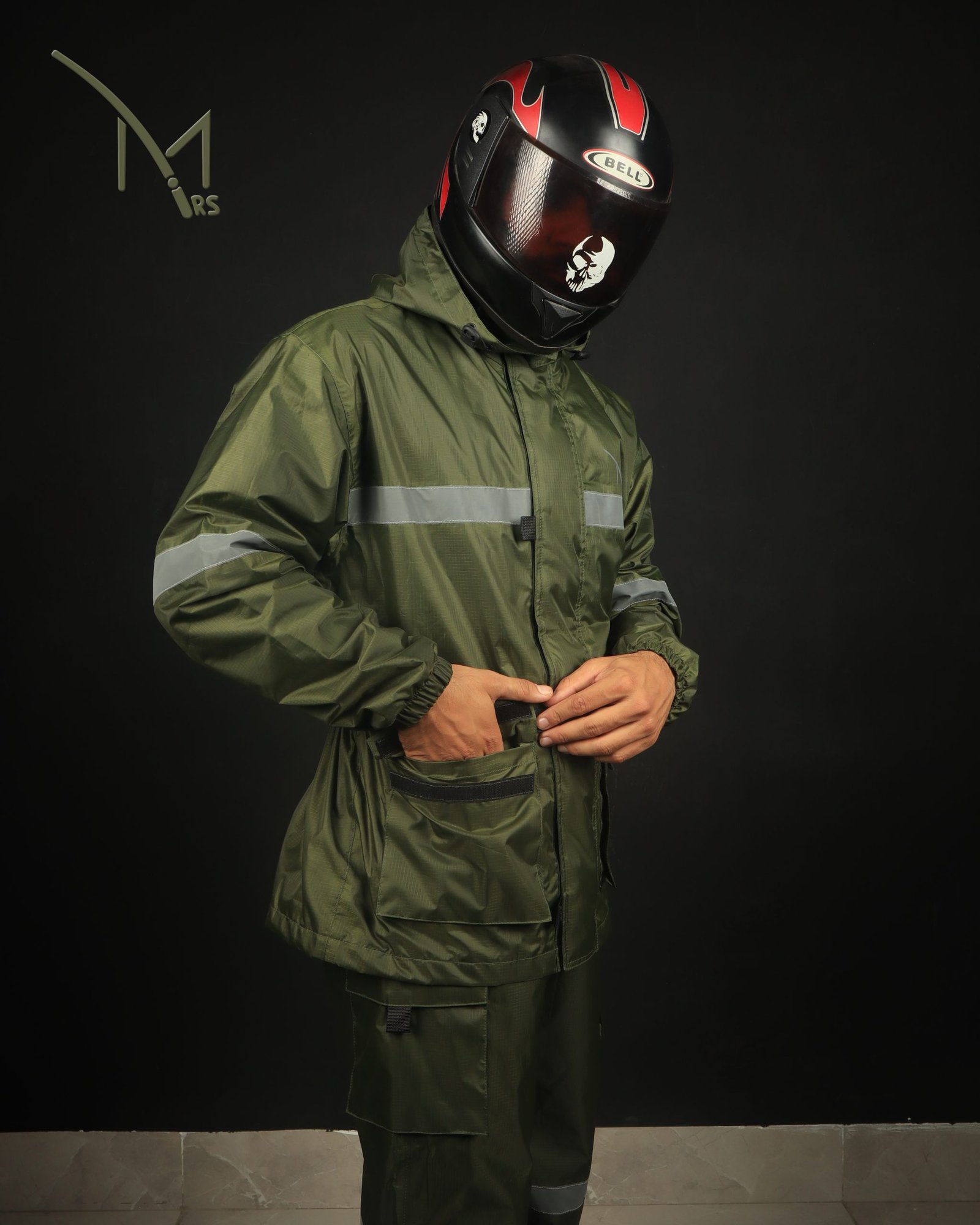
Rain, while a necessary part of the
natural cycle, can often dampen our spirits and disrupt our outdoor plans. But
with the right gear, a little rain shouldn't deter you from enjoying the great
outdoors. A good quality rain suit can be your best friend on rainy days,
keeping you dry, comfortable, and allowing you to continue your adventures
undeterred.
This guide will delve into the world
of rain suits, exploring their usage, key features, and most importantly, how
to maintain them for long-lasting durability and comfort.
Understanding Rain
Suits: A Primer
A rain suit typically comprises two
essential components: a rain jacket and rain pants. These garments are designed
to be waterproof and breathable, shielding you from the elements while allowing
moisture vapor to escape, preventing you from overheating.
Key Features of a High-Quality Rain Suit:
- Waterproofness: This is the cornerstone of any
rain suit. Look for garments with a high waterproof rating (measured in
millimeters), indicating the amount of water pressure the fabric can
withstand before leaking.
- Breathability: Breathability is crucial for
comfort, especially during intense activity. High-quality rain suits
utilize advanced technologies like Gore-Tex or eVent to allow moisture
vapor to escape, preventing clammy and uncomfortable feelings.
- Durability: A durable rain suit can
withstand the rigors of outdoor activities. Look for reinforced seams,
sturdy zippers, and robust fabrics that can resist abrasion and tears.
- Comfort: Comfort is paramount. Ensure
the rain suit fits well, allowing for a full range of motion without
feeling restrictive. For a customized fit, consider features like adjustable cuffs, hoods, and hem drawcords.
- Visibility: Enhance your safety by
choosing a rain suit with reflective elements for increased visibility in
low-light conditions.

Choosing the Right Rain Suit
for Your Needs:
The ideal rain suit will depend on
your specific needs and intended use.
- For Hiking and Trekking: Look for lightweight, packable
rain suits with excellent breathability to handle strenuous activity.
- For Camping and Backpacking: Opt for a more durable and
robust rain suit that can withstand harsh weather conditions and heavy
backpacks.
- For Cycling: Consider a rain suit with a
longer back hem to provide extra coverage while cycling.
- For Urban Commuting: A compact and easily packable
rain suit that can be stowed in your bag is ideal for unexpected showers.
Usage Tips for Optimal Performance:
- Layer Up: Wear appropriate base layers
and insulating layers underneath your rain suit to maintain warmth and
regulate body temperature.
- Adjust Ventilation: Utilize the ventilation
features of your rain suit, such as pit zips or mesh panels, to regulate
temperature and prevent overheating.
- Hood Adjustments: Ensure the hood fits snugly
and comfortably while providing adequate visibility. Adjust the drawcord
to prevent it from obstructing your peripheral vision.
- Proper Fit: A well-fitting rain suit will
provide optimal protection and comfort. Avoid overly tight or loose
garments.
- Pack Smart: When packing your rain suit,
ensure it is properly folded and stored in a dry, dust-free place to
prevent damage.

Maintenance Tips for
Long-Lasting Protection:
Proper care and maintenance are
essential to prolong the life of your rain suit and ensure continued
performance.
- Regular Cleaning:
- Rinse your rain suit
thoroughly with clean, lukewarm water after each use to remove dirt and
grime.
- Avoid using harsh detergents
or bleach, as these can damage the waterproof and breathable membranes.
- For tougher stains, use a mild
soap specifically designed for outdoor gear.
- Drying:
- Hang your rain suit to air dry
in a well-ventilated area, away from direct sunlight.
- Avoid using a dryer, as the
high heat can damage the waterproof and breathable membranes.
- Storage:
- Store your rain suit in a
cool, dry place, away from direct sunlight and heat sources.
- Avoid storing it in a damp or
humid environment, as this can promote mold and mildew growth.
- Seam Sealing:
- Regularly inspect the seams of
your rain suit for any signs of wear and tear.
- Use a seam sealant to repair
any damaged seams and maintain waterproofness.
- Water proofer Treatment:
- Periodically re-apply a DWR
(Durable Water Repellent) treatment to the outer fabric of your rain
suit.
- This will help to repel water
and prevent the fabric from becoming saturated, allowing it to breathe
more effectively.
Troubleshooting Common Rain Suit Issues:
- Leaking Seams: If you notice water leaking
through the seams, reseal them using a seam sealant.
- Loss of Water Repellency: If water is beading up on the
fabric, the DWR treatment may have worn off. Reapply a DWR treatment to
restore water repellency.
- Mold and Mildew: If you notice mold or mildew
on your rain suit, clean it thoroughly with a mild soap solution and allow
it to air dry completely.
By following these usage and
maintenance tips, you can ensure that your rain suit provides reliable
protection and comfort for years to come.
In Conclusion:
A high-quality rain suit is an
essential piece of gear for anyone who enjoys spending time outdoors,
regardless of the weather. By understanding the key features, choosing the
right suit for your needs, and practicing proper care and maintenance, you can
confidently face any downpour and continue your adventures with peace of mind.


